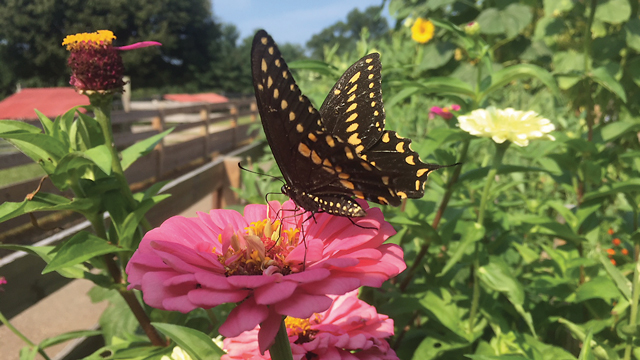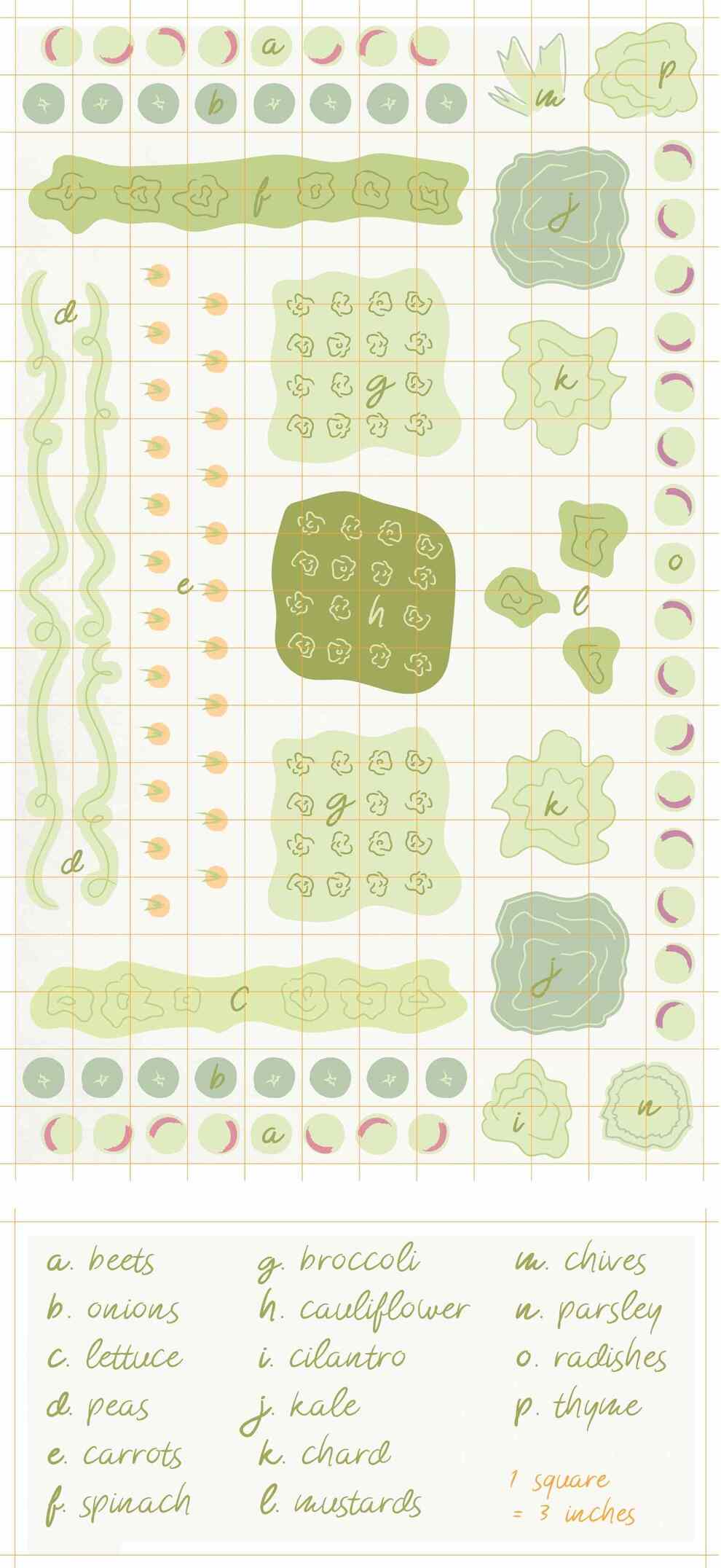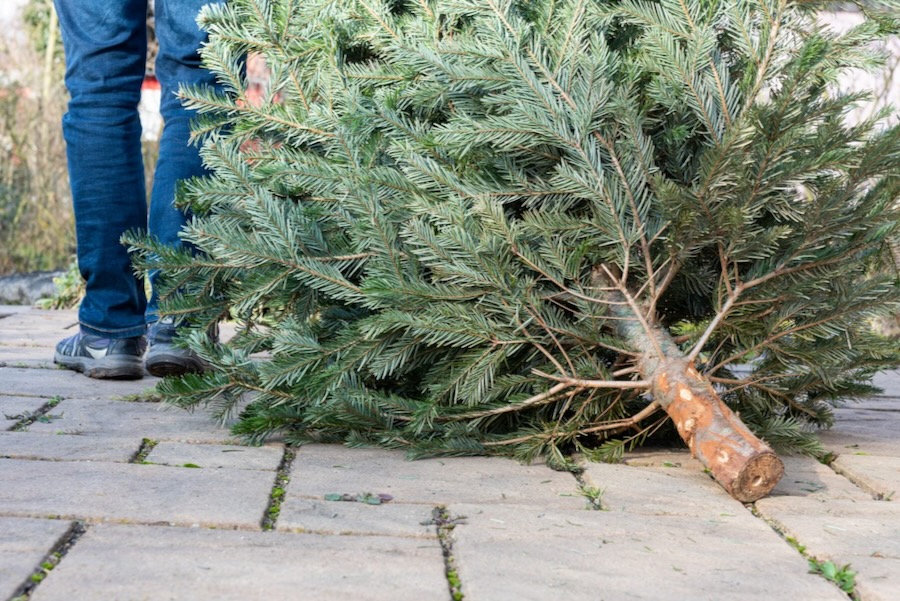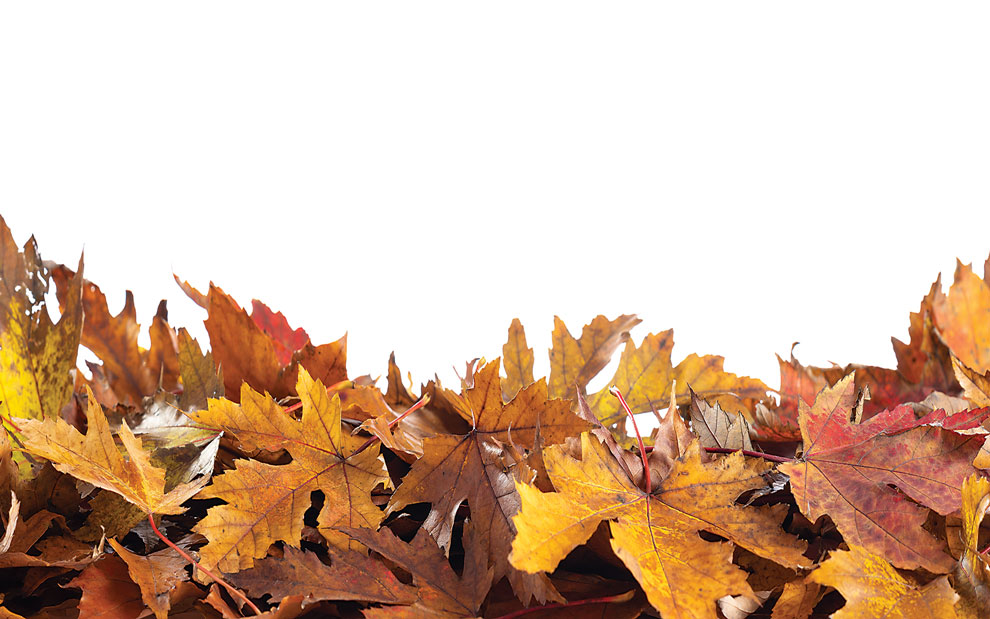My daughter and her 2-year-old son garden on their deck. While they don’t exactly slay the grocery bill with their bounty, they do enjoy the time spent together. My grandson checks on the ripening strawberries and is curious about the potatoes growing in the big felt bag. He is learning to wait for the tomatoes to turn red, and perhaps, more importantly, that his food comes from plants– not from the store.
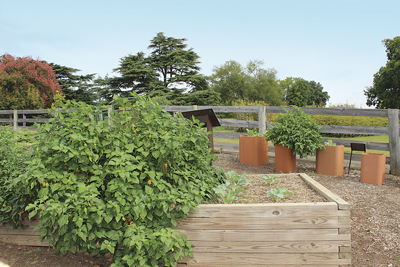 In Richmond, Jack’s Garden at Maymont is a living lesson on how to grow vegetables in small spaces. Most mornings, a master gardener volunteers on-site, encouraging folks who stop by to try the peas or fresh carrots they are tending. These volunteers share information about growing vegetables by pointing out the various methods demonstrated for small-scale gardening, like deciding where to place your containers on the deck or finding the right spot in your yard for a raised bed. It’s all part of a wonderful exercise to teach families how to grow healthy food in small spaces with the help of small hands. Keep reading for some tips on container gardening in small spaces with your family.
In Richmond, Jack’s Garden at Maymont is a living lesson on how to grow vegetables in small spaces. Most mornings, a master gardener volunteers on-site, encouraging folks who stop by to try the peas or fresh carrots they are tending. These volunteers share information about growing vegetables by pointing out the various methods demonstrated for small-scale gardening, like deciding where to place your containers on the deck or finding the right spot in your yard for a raised bed. It’s all part of a wonderful exercise to teach families how to grow healthy food in small spaces with the help of small hands. Keep reading for some tips on container gardening in small spaces with your family.
Container Gardening at Home
When choosing a container, allow plenty of room for roots to grow and enough soil mass so the plants do not dry out quickly. Water should be easily accessible, so have a hose nearby. Use a large container (roughly 2 ft. x 2 ft.) and place a tray under the container to hold water. This extends the time between watering.
 If you’re a beginner, consider purchasing a container gardening system. These containers are the right size and have a water well incorporated within them. Be sure to follow the directions carefully to get the most out of this kind of container. As mentioned earlier, water is vital for plant growth and it is important to ensure that all of the soil (in whatever container you use) is moist. This will help the roots grow throughout the container and not only in the top few inches of the soil. When watering, take the time necessary to water your containers thoroughly. But be careful! Roots also need air, so allow the container to dry between watering so the roots do not rot.
If you’re a beginner, consider purchasing a container gardening system. These containers are the right size and have a water well incorporated within them. Be sure to follow the directions carefully to get the most out of this kind of container. As mentioned earlier, water is vital for plant growth and it is important to ensure that all of the soil (in whatever container you use) is moist. This will help the roots grow throughout the container and not only in the top few inches of the soil. When watering, take the time necessary to water your containers thoroughly. But be careful! Roots also need air, so allow the container to dry between watering so the roots do not rot.
Fill your container with fresh potting mix, not garden soil. Potting mix is lighter and is designed to provide ample pore space for air. Consider purchasing mixes with a slow-release fertilizer and a water-absorbing polymer. This will save time and ensure the vegetables receive the nutrients they need to grow. Organic gardeners should purchase the plain potting mix and fertilize with products that meet their gardening preferences.
 Growing Veggies in Raised Beds
Growing Veggies in Raised Beds
Save the garden soil and compost for the raised bed. While there are raised beds designed for use on a deck or patio, raised beds are typically constructed on the ground in an area that is likely to receive at least six hours of sunshine daily when you’re growing veggies. The height and length of the raised bed is up to the gardener, but keep the bed three to four feet wide so you can easily reach the plants in the center. The square-foot gardening method developed by Mel Bartholomew grows healthy vegetables year round in a raised bed, even one as small as 4 ft. x 4 ft. For more information, visit melbartholomew.com.
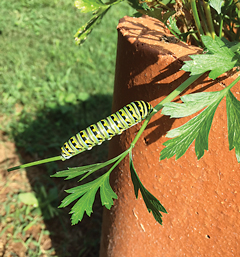 At Maymont, the raised beds are mulched with straw or shredded leaf debris after the seeds are sown or the small starter vegetables planted. Next, we add organic mulch to shade the soil surface and keep it cooler. This also improves water retention and reduces weed growth. Please do not smother your newly planted seeds! Important note: Do not use pine tags or hardwood mulches. These mulches will lower the soil pH, and vegetables thrive in sweeter soil with a pH between 6.5 and 7.0.
At Maymont, the raised beds are mulched with straw or shredded leaf debris after the seeds are sown or the small starter vegetables planted. Next, we add organic mulch to shade the soil surface and keep it cooler. This also improves water retention and reduces weed growth. Please do not smother your newly planted seeds! Important note: Do not use pine tags or hardwood mulches. These mulches will lower the soil pH, and vegetables thrive in sweeter soil with a pH between 6.5 and 7.0.
For small areas, think up instead of out. You might want to add a structure to a raised bed or beside a container to provide additional growing space. Vertical gardening makes harvesting easier for your little helpers – and come to think of it, for seniors, too. Always check the plant height on the seed packet for your vining pea, bean, squash, or whatever you’re growing to be certain the structure is ample enough to meet that need.

No matter where it happens or what you’re growing, gardening with the family is fun! Keeping it on a small scale not only reduces the work significantly, but greatly increases the opportunity for success. Visit your local garden center for additional advice and to purchase all the supplies needed to start a small garden on your deck, patio, or in the backyard.
Photos: David LeGrande, Maymont Foundation


